- Category
- War in Ukraine
He Used To Blow Up Clubs With His Music, Now He Blows Up Russian Armor
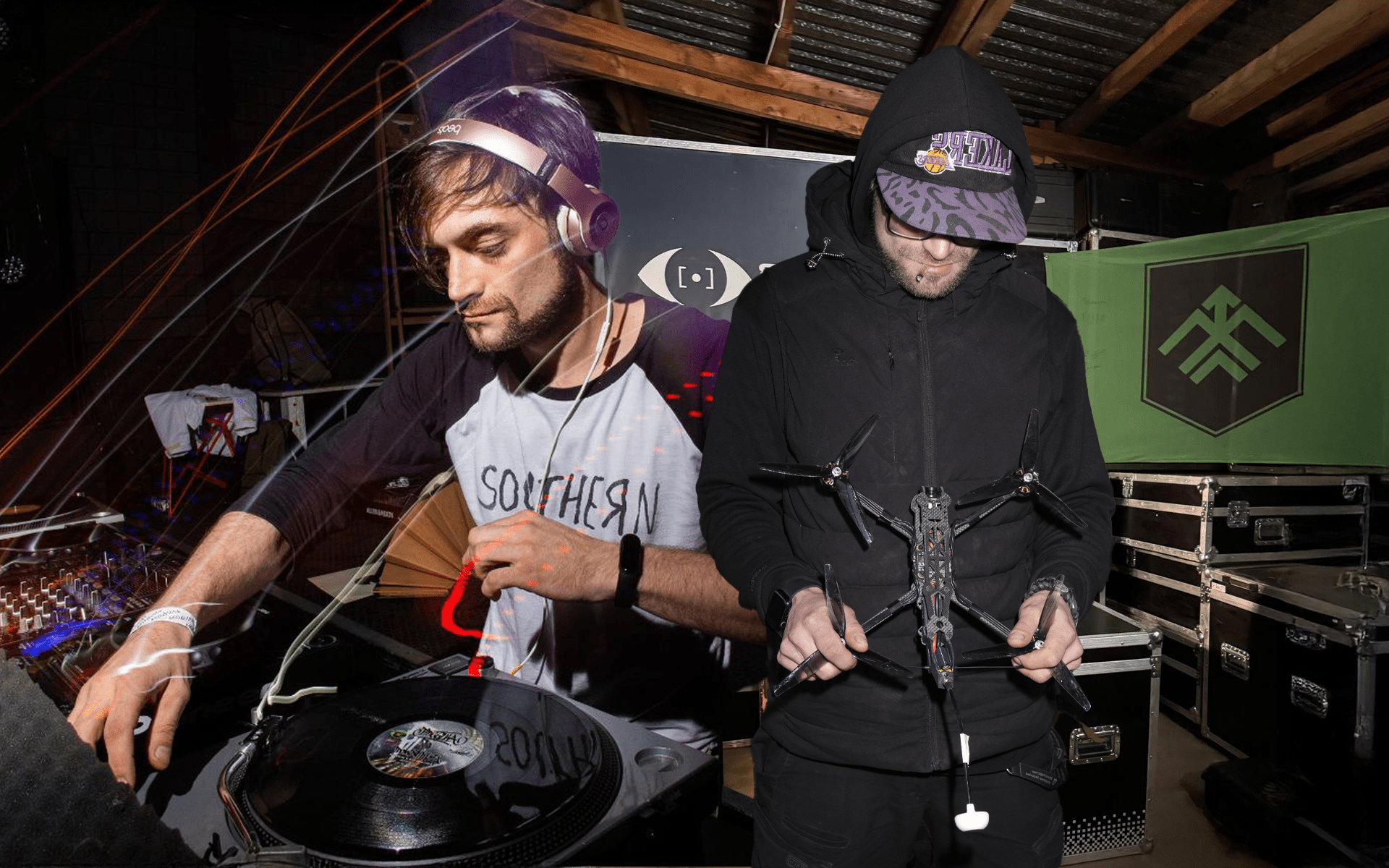
Yasni Ochi is a strike drone unit within the 13th Khartiia Brigade. Just three and a half years ago, none of its members had any military ties. Today, they’re among the most effective drone teams on the entire front. We traveled to the Kharkiv region to watch their training and meet one of their operators, Serhii. He used to blow up clubs with his music, but now he blows up Russian armor.
The unit Yasni Ochi was formed after Russia’s full-scale invasion of Ukraine in 2022. It began as a group of friends eager to support the military. They immersed themselves in drone tech and became a kind of freelance reconnaissance team—deploying to various frontline positions, scouting, guiding artillery fire, and then moving on to help another unit.
Eventually, they officially joined the Ukrainian Armed Forces.
“When we had gained experience and knowledge, we decided to mobilize into the ranks of one of the newly created brigades at that time,” says Heorhii, the unit’s commander.
Before 2022, Heorhii was a digital marketing exec and CEO of several companies. Today, he leads one of the front’s most effective drone teams.

“Make sure people know—we’re not cyborgs,” he says. “We’re regular folks who had to stand up and fight. Because otherwise, we’re screwed.”
The DJ in a drone war
We’re standing in a field in the Kharkiv region, in the middle of nowhere. Under a small tarp, about a dozen different drones lie on the ground. A few boxes form a makeshift workstation where soldiers take turns flying. On the monitor: a drone’s-eye view of the same workstation, buzzing overhead. A white target is placed on the ground. The operator adjusts position, takes aim, and releases a mock munition. Seconds later, we see it hit within inches of the target.
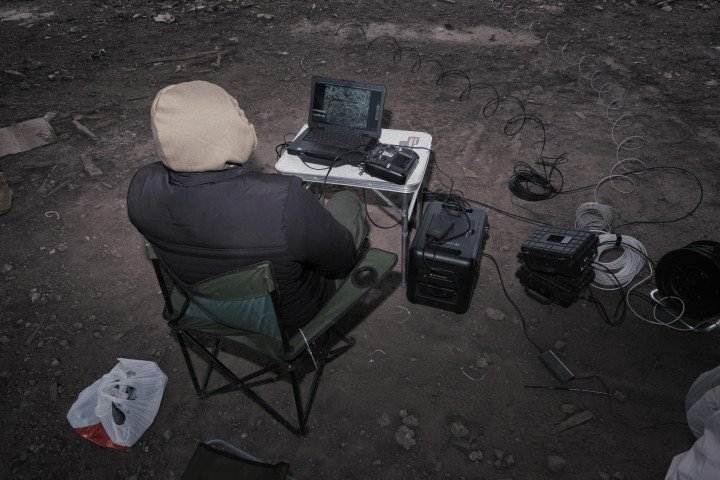
Most of the unit’s people are from creative backgrounds, and it shows. Heorhii says their decision-making is much quicker than typical for the military. Their brigade, Khartiia, was designed like a startup and is known for its innovation. It was the first in history to pull off Ukraine’s robot-only assault on Russian positions.
Many members had successful civilian careers. Heorhii points them out: a child psychologist, a graphic designer, a programmer with 11 years of experience, a guy who left Poland to come fight.
“And that’s Serhii, our DJ,” Heorhii says.
Serhii, 37, is of average height, wearing a hoodie, a short beard, and stylish glasses. He’s not just a hobbyist—he’s a seasoned DJ and resident at Dnipro’s legendary club “Module.”

“I’ve been doing music for 22 years,” says Serhii. “We had a promo group, 5025 DNB, organized parties all over Ukraine. Once I went to perform in Greece, ended up staying three months—clubs kept asking me to play. I don’t just mix tracks, I use a drum machine. I perform live.”
Serhii’s stage name is Petstep—a play on his earlier alias Animal.
“In college, I partied a lot,” he said, explaining the former stage name. “Later, when I got married, I figured it was time to tone it down—so I became Pet, like a domesticated animal. And Step, because of the drum & bass and dubstep I played.”
Now Petstep is also his callsign.
“The police said: cool, but come with us”
Before the war, he worked in software development. At the outset of the full-scale invasion, he and others coordinated DDoS attacks against Russia.
“We had a group chat to plan attacks,” Petstep says. “It went well—we took down a lot of sites. Then Russia’s attacks on Dnipro intensified, so I took my family out of the city. Internet was spotty—only mobile through one base station. Still, I wanted to keep up the DDoS, but I ended up overloading the tower and crashed all three providers. Kind of fried my laptop too. Whoops.”
He also had a 3D printer. Alongside cyberattacks, he experimented with printing custom drone mounts to convert civilian UAVs into simple bombers. He tested designs on the front and flew the drones himself.
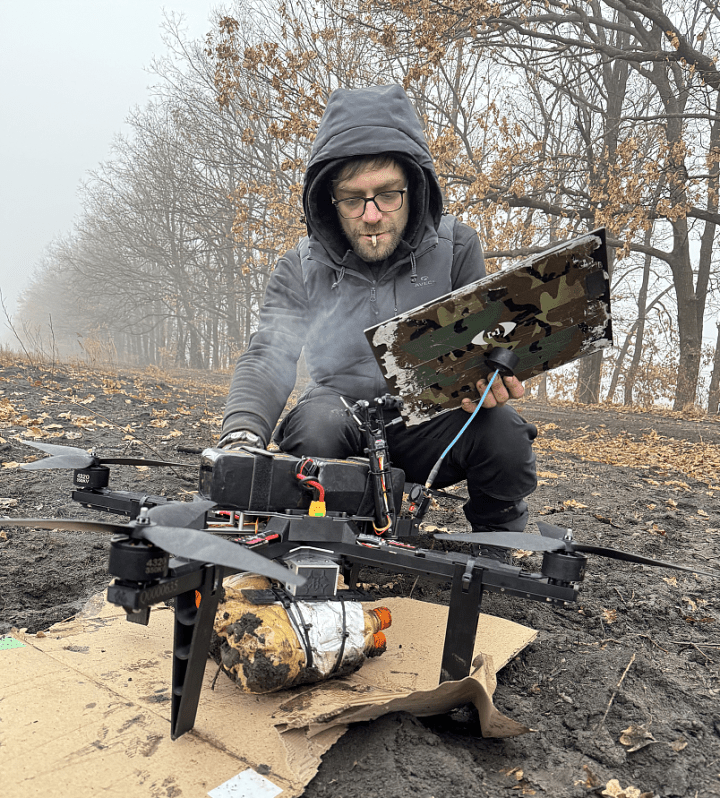
“I practiced near a school field and always warned people nearby,” says Serhii. “But someone called the cops.”
He showed the officers his phone—dozens of chats with soldiers he was helping.
“The police said, ‘Cool, but come with us,’” he recalls.
They called in Ukraine’s Security Service (SBU). The conversation went on until after midnight, when one of the agents finally asked the police, “You need him?” They said no.
“So the agent pulls me aside and says, ‘People like you are useful in the army,” says Serhii. “He put me in touch with Heorhii—who, along with his team, was already supporting the SBU with aerial reconnaissance. That’s how I ended up with Yasni Ochi.”
“Like a frag in a game”
Petstep’s first operation was in 2022 in Barvinkove, Kharkiv region.
“Funny story,” he says. “After the mission, we stuck around to train. Somehow ended up next to a HIMARS crew without realizing. I look up from my screen—gun barrel in my face. Turn my head—another one behind me. I thought, ‘This is a cartoon moment. If I duck, maybe they’ll shoot each other.’ But they were our guys. We explained everything and it was fine.”
Yasni Ochi unit doesn’t just fight—they teach. With their own training program, they’ve already trained over 2,500 Ukrainian defenders.
“I enjoy it,” says Petstep. “I feel like all the frags our trainees make are partly mine too.”
“Frags,” a gaming term, means eliminated enemies. Petstep has his share:
“Tanks, armor—you name it. Human targets? Over a hundred. Not a lot though—my buddy here has over 200. Do I remember the first one? Didn’t feel like I killed someone. Really, just like a frag in a game.”
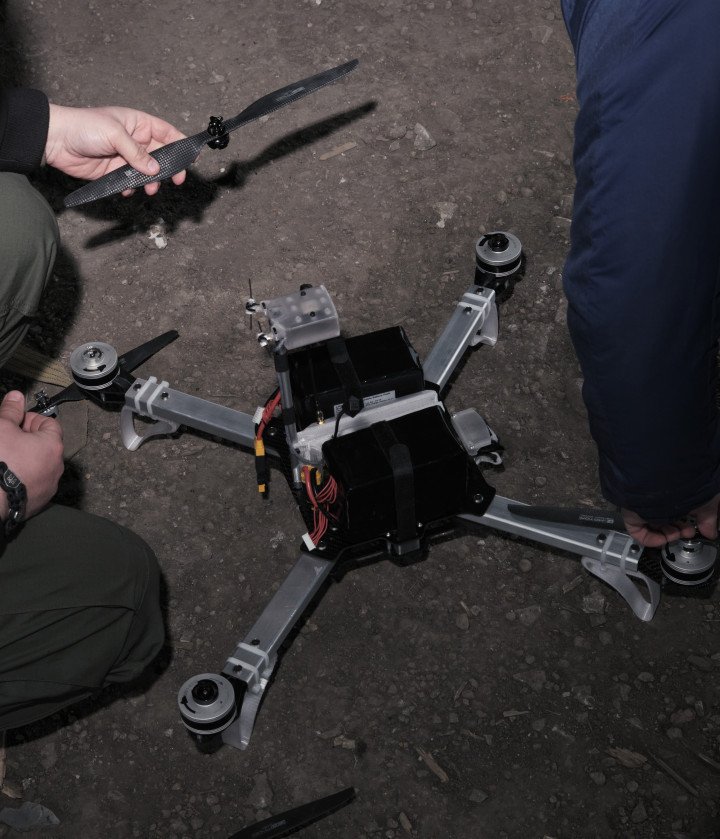
Their drones now reach 20–25 kilometers. But as we talk, the team tests new models with automated targeting systems and extended range. Photos of these are off-limits.
“I think eventually we’ll hit 300 or even 500 km,” he says. “My dream? Hit the Kremlin. For now, though, in our operational zone, the enemy barely moves. No more logistics, no lights. We’ve made passage there expensive—and we collect payment in full.”
You can support Yasni Ochi here. PayPal: yasniochi.khartii@gmail.com.
“I’m a crap spy?”
Petstep is calm, even relaxed. But drone work is deadly.
“Once, Heorhii and I were doing recon in Bakhmut,” he says. “The enemy spotted us and started shelling the factory we were in. Later we learned two self-propelled guns were firing at us. It was one of my first times out—you know, when you haven’t grown your balls yet—I was so scared I was practically green. The Russians leveled the whole building—except the one room where our van was.”
Now, such missions are routine. A drone operator’s day? Show up, fly, pack up, move on, Petstep says.
“Usually it’s three of us: one flies, one navigates, one logs targets,” he says. “Everyone’s involved. But recently, while I was flying, I look up—and the other two are just scrolling TikTok. Guess they trust me. But I yelled at them, hard. They don’t do that anymore.”
They share their footage on Instagram and Telegram. Still, it felt odd at first—even though the soldiers say they only share a small fraction of what they actually do.
“We’re fighting a war—but also making content,” says Petstep. “Now, combat units need marketers and social media managers. At first, when we focused on recon, I thought: I’m a spy, but everyone can see what I do. So… am I a crap spy?”
At the cutting edge of tech
Petstep now splits his time between flying missions, technical R&D, and training others. But there’s one more part of his life he won’t let go.
“Transformers Session isn’t just a DnB and Jungle event—it’s a transformation into pure waves of sound! Every beat is part of a movement; bass leads us through time and space.”
That’s the promo for a recent show in Dnipro. Headliner: DJ Petstep. About once a month, he gets time off from Heorhii to perform.
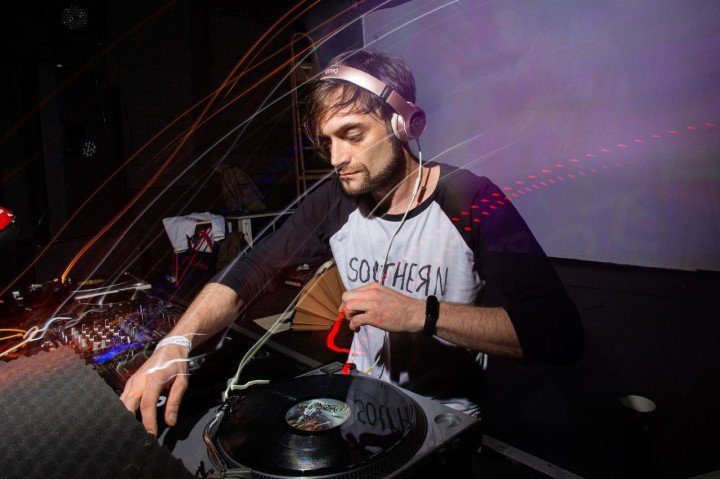
“At first it felt weird,” he says. “Army life is like being a social hermit—you see two or three people in green, maybe some old village ladies. Then you’re in a club with music and dancing. But I’ve learned to switch gears. I get a rush from it. And we raise donations too.”
So far, he’s raised around $12,000 for drones and gear through gigs. The old Module crew helps, too—about 150 people in a chat who chip in when needed. Nearly all of them now serve—and many fly drones too.
After the war, he plans to stay in the field.
“I love it,” says Petstep. “I’m at the cutting edge of tech, you know? We’ve got the newest, most advanced gear—and I test and improve it myself. I’ve flown almost everything. Well, except into space. That’s next level.”
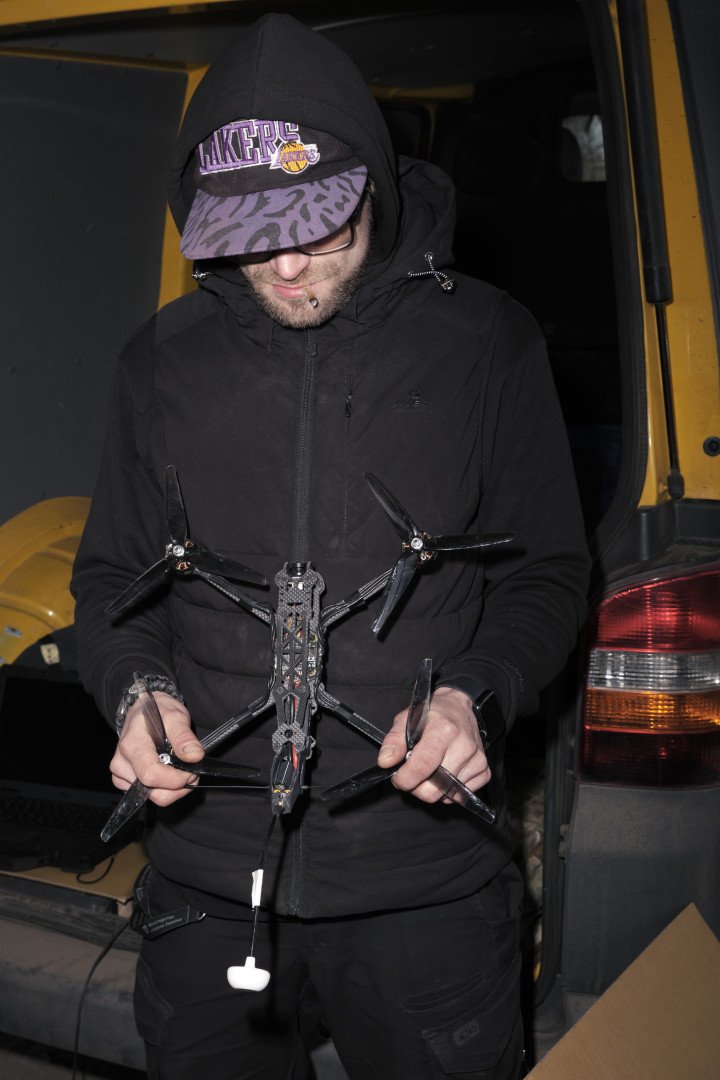
What does he miss most from civilian life?
“Nothing,” Petstep says after a pause. “I’ve already transformed into a soldier. The concerts? They’re enough. They keep me smiling for a month. I play, I fight, I play, I fight. That’s life now.”
.





-c42261175cd1ec4a358bec039722d44f.jpg)
-46f6afa2f66d31ff3df8ea1a8f5524ec.jpg)
-6359eca46c72bde40a90abaaadd6eaa8.png)
-29a1a43aba23f9bb779a1ac8b98d2121.jpeg)

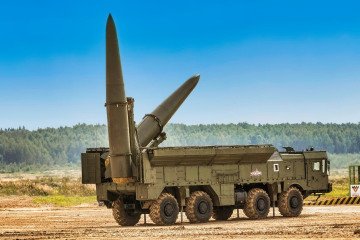
-206008aed5f329e86c52788e3e423f23.jpg)